Heirs and Spares | History Today - 18 minutes read
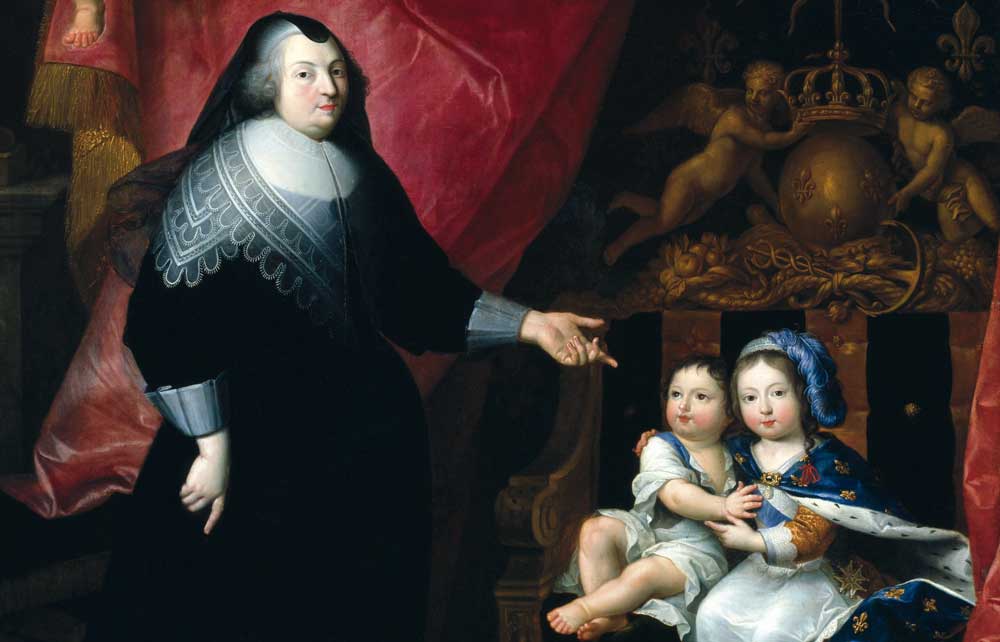
Rumours flew across Paris in the summer of 1658 that the 19-year-old Louis XIV was seriously ill, perhaps near death. Senior courtiers rushed to form a new government around the king’s younger brother by two years, Philippe, duke of Anjou. Philippe himself – known at court simply as ‘Monsieur’ – did little in support of this potential coup and, by the autumn, Louis having recovered, was rewarded for his passivity with the gift of a large country house on the outskirts of Paris, the château of Saint-Cloud.
The loyalty of a royal second son towards his older brother the sovereign was not always a given, and Philippe’s lack of active political ambition in this situation marks a turning point in the history of fraternal relations in the French royal family. Courtiers and government officials had sincere cause to worry in this brief political crisis; there are plenty of examples of more aggressive behaviour in earlier generations, notably by the previous Monsieur, Gaston, duke of Orléans, the younger brother of Louis XIII. Gaston’s rebellions had been legion in the 1620s and 1630s and a serious threat to the stability of the government of France, though they have often been romanticised and trivialised through novels and films set in the era of the Three Musketeers.
Fraternal strife was nothing new in the 17th century, nor of course limited to France. Stories of brothers fighting over an inheritance go back as far as the Biblical tales of Jacob and Esau. And in the glare of modern media spotlights, rivalries between eldest sons and royal spares can still be seen in royal families today. In western European kingdoms, the system of primogeniture – everything passing to the eldest son – had been established in the Middle Ages as a means to prevent the civil wars and bloodletting that had plagued earlier generations. In France specifically, a system known as the apanage was developed, through which younger royal brothers were given sizeable portions of the royal patrimony to govern and from which to draw a princely income. French princes built up their patronage networks with the local nobility, constructed large palaces and sometimes developed wealth and power that rivalled the royal court itself.
In response, the French monarchy of the 16th century tightened its control over the extended members of the royal dynasty. Still, some younger brothers threatened to outshine their sovereign. King Charles IX (r.1561-74), for example, was not known for his military valour and was frustrated to see his brother, Henry, duke of Anjou, gain glory on the battlefield. Charles and Henry’s youngest brother, François, duke of Alençon (1555-84) was the first prince to be known solely as ‘Monsieur’. The title had first developed in the 1570s as a way formally to mark Henry of Anjou as the second prince of the kingdom, a great honour but without inherent wealth or power attached, and Alençon took over this moniker (and the title of Anjou) once Henry succeeded as king (as Henry III, r.1574-89). Yet, although François was honoured with a title like Monsieur, he was increasingly frustrated. As someone whose birthright was to rule – a king in waiting, should his brother die without a son – he had an innate compulsion to express his authority in politics or warfare. If he did this too well, he was seen as a threat; if he did not, he was criticised as lazy or weak. It is a problem royal siblings face today: if they are active, they are seen as stepping out of line; if they do nothing, they are criticised for being idle.
Malcontents
In the 1570s, several young noblemen, sharing young Prince François’ frustrations at being left out of military and political decision-making, formed a group at court called the ‘Malcontents’. Their ‘Conspiracy of the Malcontents’ in spring 1574 was short-lived, but in September 1575, Monsieur and his supporters left court and took refuge in his apanage lands, where he issued a formal declaration: his primary interests were not personal, but to preserve the ‘ancient laws of the Kingdom’ – vaguely defined – and called for the removal of foreigners from their influential places in the government. At the height of the Wars of Religion, he pleaded for peace in the realm and for a general church council to be convened to settle religious differences. In his text, Monsieur called for toleration, imploring Frenchmen ‘to treat one another as brothers, kinsmen, neighbours, and fellow countrymen’. The king feared Monsieur would ally with Protestant England or the Dutch, upsetting the fragile peace with Catholic Spain. But he lacked the resources to mount a serious rebellion and domestic harmony was restored by November.
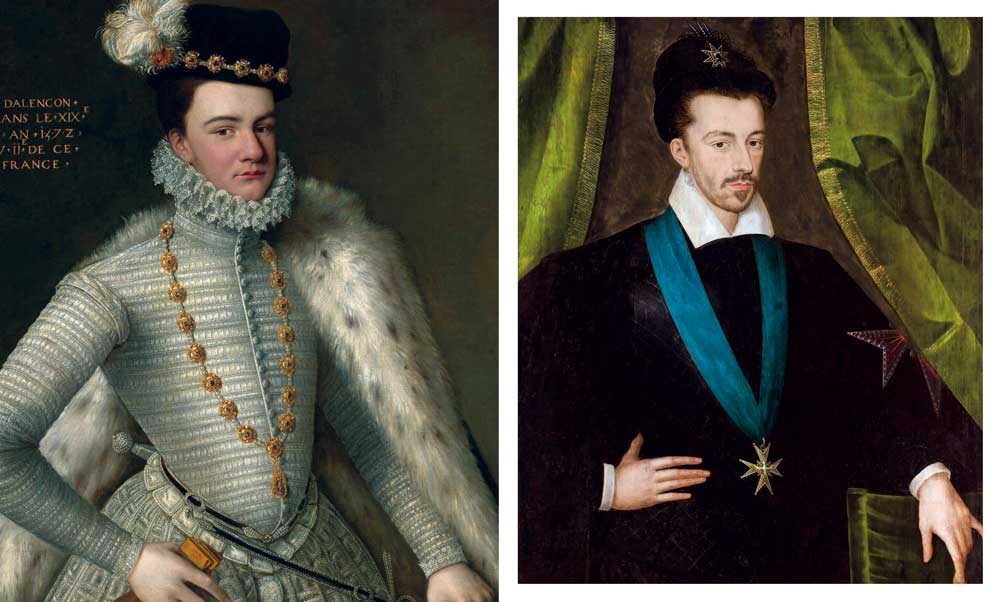
Yet by spring 1576, Monsieur was once again in the countryside, aligning his personal troops with Protestant rebels. In May he met with his mother, Catherine de’ Medici, who was able to negotiate the ‘Peace of Monsieur’, which did little for his Protestant allies, but did gain him a significant enhancement of his territorial power base.
From here on, Monsieur would never openly rebel against his brother Henry III. But he did continue to pursue his own personal ambitions that often went against the policies of the royal government. Anjou looked outside the kingdom for opportunities to shine. He picked up where his older brother had left off as a suitor of Elizabeth I of England, being presented by his envoys as ‘less papistical’ than Henry and therefore more tolerable as a consort for Protestant England. Still, Elizabeth was over 40 and Anjou only 23, and the Protestant-Catholic divide as wide as ever. The story of their courtship, on and off between 1578 and 1581, is long and complex. Although at some points it looked as if Elizabeth genuinely desired their union, many commentators of the time (and historians since) concluded that both parties were merely using the idea of a marriage to push forward an Anglo-French alliance that would aid the Dutch in their bid for independence from Spain. This was not always in accordance with the desires of Henry III, however, who wanted above all things to maintain peace within his deeply fractured kingdom and to avoid provoking the wrath of Catholic Spain.
Nevertheless, Dutch agents tried to make use of fraternal bonds: if one French prince was drawn into their conflict with Spain, surely his older brother the king would follow, in defence of family honour? Henry III made it clear again and again that this was not the case. Yet Monsieur sent a messenger to Paris to inform the king that ‘as a prince of France’ he could not ignore pleas for assistance. A deal was made with the Dutch: in exchange for his military support, Anjou would be given a sizeable pension and would be appointed ‘Lord Protector’ of the Dutch provinces (Holland, Flanders, Brabant, etc).
Catherine de’ Medici wrote diplomatic letters furiously in an effort to keep the peace. Her frustration is best shown in a letter she wrote to Anjou in late 1579: ‘My son, you made all those negotiations without us, to my great regret, and it does not follow that you should place this kingdom in danger, destroy it, and displease the king your brother simply to keep your word.’ She once again highlighted his position as Monsieur: ‘No matter how much you owe this honour [of being elected lord of the Netherlands] to your position as brother of the king, you are nevertheless his subject and you owe him complete obedience.’
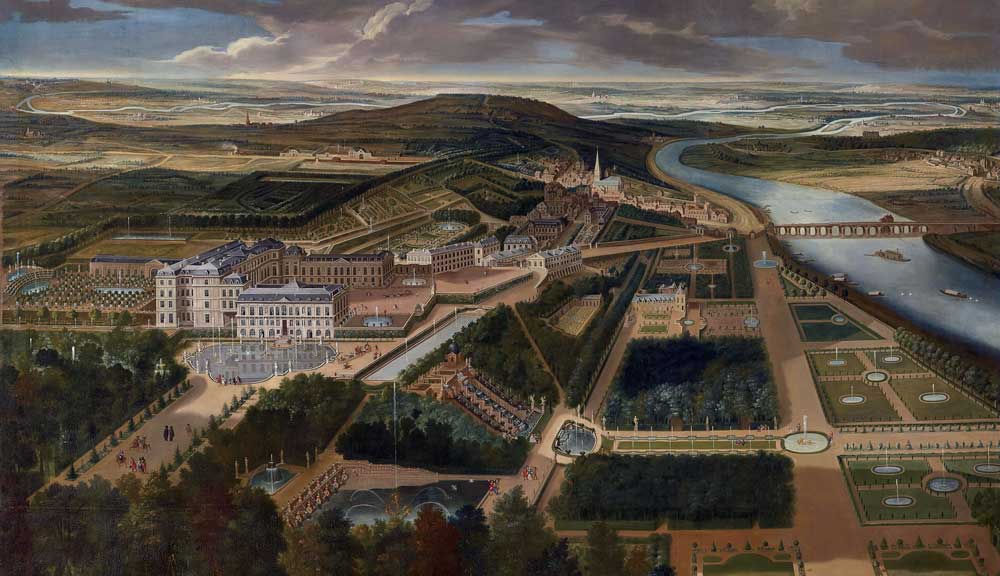
Following a series of stately ceremonial entries into various towns of Flanders and Brabant in spring 1582, and an almost royal enthronement in Antwerp as ‘Sovereign Lord of the Low Countries’, Anjou attempted to organise his troops in defence of Dutch freedoms. But his princely authority was mostly ignored and his troops were unpaid and practically starving. On 17 January 1583, his soldiers took matters into their own hands and sacked the city of Antwerp, an event known as the ‘French Fury’. Monsieur lost the trust of the Dutch people and his brother, the king of France, never gave his full support to their cause. By July, Anjou was back in France in disgrace. His health deteriorated and by June 1584 he was dead.
The role of Monsieur was not filled in the next reign, as Henry IV (r.1589-1610) had no brother. His early death, however, left a power vacuum that ultimately was filled by Cardinal Richelieu, first minister of Louis XIII (r.1610-43) and one of the chief architects of French absolutism. It was Richelieu’s desire for a kingdom to be ruled by only ‘one king, one faith, one law’ that led to the highly fraught period of rebellion by Louis’ younger brother, Gaston, duke of Orléans.
No one like Gaston
Like the previous Monsieur, Gaston d’Orléans (1608-60) thought of himself as the primary defender of the rights of the old nobility in the face of encroaching royal absolutism. One of the chief sources of discord was the fact that between 1610 and 1638 Gaston was heir to the throne. Louis XIII’s marriage to Anne of Austria was, for over 20 years, childless, so Gaston’s marriage choices were affairs of state and sources of contention. Political conflicts also centred on Louis XIII’s tense relationship with his mother, Marie de’ Medici, and her reluctance to yield power. These two issues developed into the ‘Chalais Conspiracy’ of 1626 and resulted in the imprisonment and death of the first of Monsieur’s chief favourites, Marshal d’Ornano. In the end, Gaston was obliged to marry his brother’s choice, but was rewarded with his own apanage, the duchy of Orléans. A pattern emerges: after a rebellion, a prince’s counsellors and friends are punished, but the prince himself is reconciled by means of a significant gift. Cardinal Richelieu, a great political tactician, knew how important it was to keep the ‘spare’ happy, writing in late 1628:
To keep Monsieur content in all things that are not prejudicial to the State, and to deny him anything that would weaken the authority of the king, are the two maxims for how to handle this prince, who, if treated honourably, will never undertake anything against the peace of the kingdom and the true interests of the State.
Gaston’s first wife soon died and, in 1629, he was once again angered by his brother’s refusal to approve his own choice of a new bride and his unwillingness to give him command of an army. Goaded by a new favourite, Antoine de Puylaurens, Gaston left court and fled to the nearby duchy of Lorraine. He was soon reconciled, however, and given another duchy: Valois. But following the ‘Day of the Dupes’ (10-11 November 1630), a palace coup ‘duping’ the queen mother and her supporters, he fled abroad once again, married the duke of Lorraine’s sister against the king’s will and settled in Brussels in the Spanish Netherlands. Here, Gaston issued a manifesto in May 1631 – in the tradition of disgruntled royal princes – denouncing Richelieu as a usurper of royal authority and oppressor of the rightful leaders of the kingdom (the nobility). He vowed to dismantle the cardinal’s oppressive and unjust taxation on behalf of the ordinary people of France. Indeed, Frenchmen did see the gallant prince as the true heir of his father Henry IV, the people’s king, and this perception would remain an irritant for the taciturn Louis XIII for the rest of his reign.
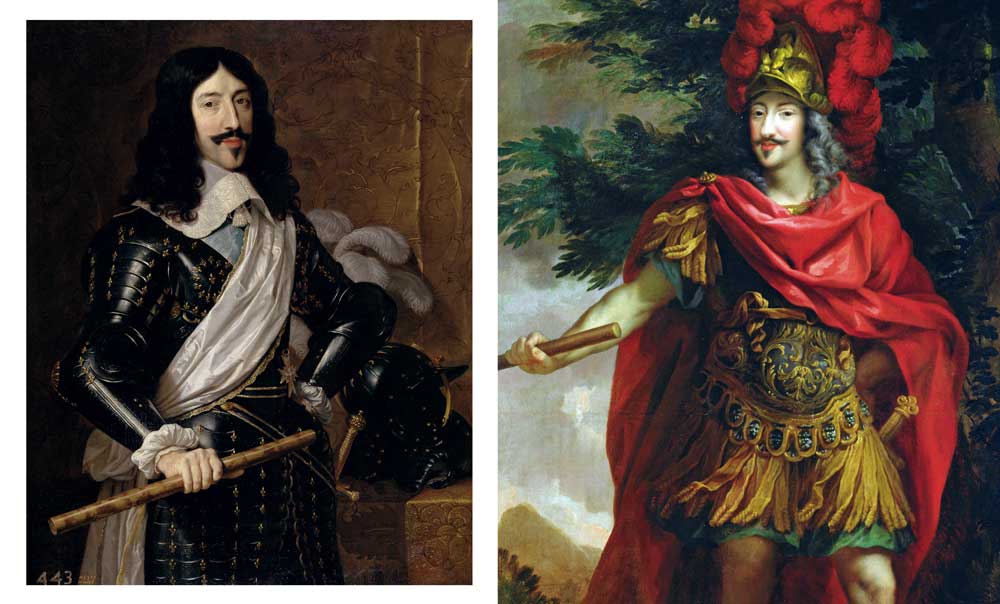
Monsieur’s rebellion of 1631-32 was his most serious. With Spanish support he raised an army and marched south across France, hoping to attract disgruntled nobles to his cause. They did not come and his forces were crushed near Toulouse on 1 September 1632. This time, the king was not ready to reconcile with his brother, but he still could not punish him severely as he remained the heir to the throne. Instead, Louis executed his brother’s chief commander, the duke of Montmorency, the head of one of the most ancient and powerful noble families in Europe. Aristocratic families across Europe were shocked.
Humiliated, Gaston returned to Brussels. In 1634 he finally made peace with his brother. This time it was the favourite, Puylaurens, who was rewarded – with a dukedom of his own; though this success was short lived and he too soon expired in a dungeon cell. Exasperated, Gaston tried to retreat from court and from political ambition, but in 1636 the brief ‘Conspiracy of Amiens’ placed him under the king’s suspicions, once again over an alleged alliance with Spain. As before, its leaders were executed, while Gaston was rewarded – his significant debts were paid and he was given large sums to persuade him to focus on his new passion, the château of Blois in the Loire Valley. This would keep him far from government, far from political intrigue. Yet the royal brothers were never truly reconciled.
Cinq-Mars
Here the story of Gaston d’Orléans’ rebellions might end. Indeed, the mature prince was now becoming known as a leading patron of the arts. His court became a haven for out of favour writers and poets, and a wing was built at Blois to showcase a new style of architecture, the neoclassicism usually associated with the reign of Louis XIV. After 1638 and the near miracle birth of the dauphin (the future Louis XIV), Gaston was no longer the direct heir. Yet conspiracy once again reared its ugly head in 1641, in perhaps the most famous of the court conspiracies of this reign, the ‘Cinq-Mars Affair’. At first this squabble between Richelieu and one of his former protégés had nothing to do with Monsieur, but as the conspiracy began to involve a plot with Spanish agents, Gaston was once again drawn in. His letters to the king of Spain were intercepted and his betrayal was clear. In the now familiar pattern, it was the nobleman Cinq-Mars who was executed and Gaston merely disgraced and sent from court, back to his poetry and gardening at Blois.
In the end fate intervened. First Richelieu then Louis XIII died, in 1642 and 1643. On his deathbed, as a final snub, Louis denied Gaston the post of regent for his five-year old son, naming instead his wife, Anne. The rest of this Monsieur’s story is as an uncle, not a brother.
Private squabbles
Only a year after the death of Gaston, his nephew Philippe (1640-1701), younger brother of Louis XIV, was given the duchy of Orléans as his own apanage. Here we see a slight shift, in that he was given this reward not as reconciliation after a rebellion, but as a recognition of the performance of his duty. That spring he married the English princess Henrietta Anne as a means of advancing his brother’s foreign policy. In the years to come, Philippe would rarely confront his brother, and their squabbles were over family matters and personal honour, never anything overtly political. Still, these rifts were taken seriously by the court and by foreign diplomats, and the outcomes were similar: fraternal reconciliation effected by a sizeable gift. But Philippe had also learned something from the experiences of his uncle: a royal prince could shine in areas other than politics and the military. His cultural and intellectual patronage set a new standard to be followed by second sons all over Europe.
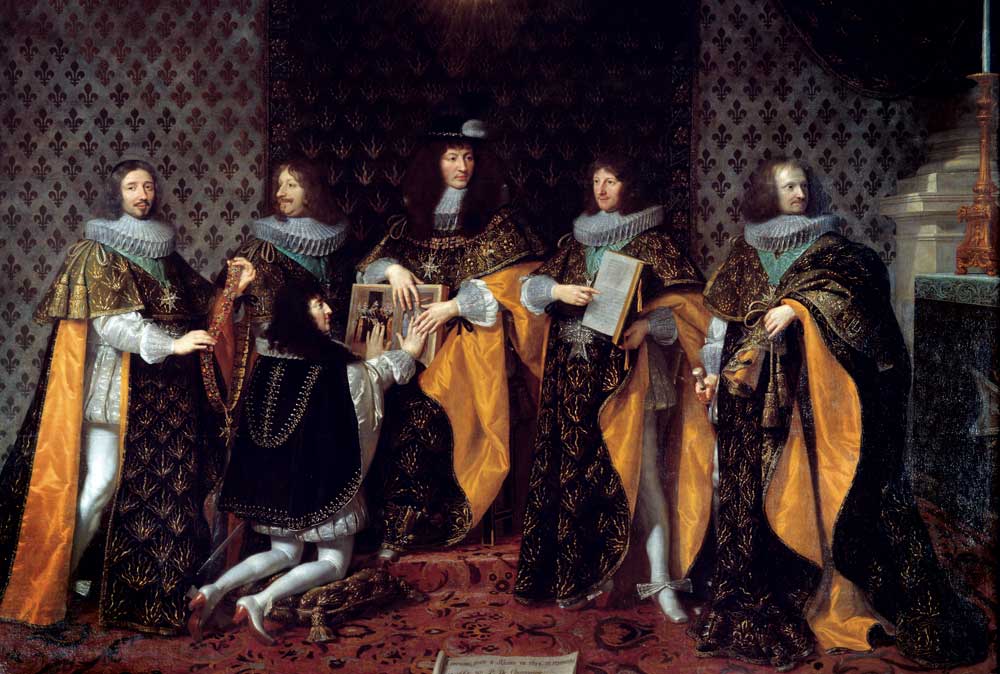
Traditional histories of the reign of Louis XIV cling to the idea of Philippe being ‘conditioned’ to be homosexual as a child to weaken his political ambitions as a prince. The memoirs of the abbé de Choisy – probably exaggerated for dramatic effect – indicate that the young prince’s interest in cross-dressing was cultivated on the orders of Cardinal Mazarin himself in order to keep Monsieur effeminate, ‘for fear that he would cause grief to the King as Gaston did to Louis XIII’. The idea of deliberately ‘weakening’ the heir to the throne, especially in this period of frequent adolescent mortality, is unconvincing.
Even if the idea had been to suppress personal ambition in the young prince, it was unsuccessful. Philippe was adamant in his demands for the post of governor of the province of Languedoc in 1666. He argued it was his right, as it had been held by Gaston, but Louis denied his brother this position. Philippe responded, as previous younger brothers had done, by retreating from court to his apanage, to his chief country residence at Villers-Cotterêts, northeast of Paris. Courtiers, remembering that this was how fraternal rebellions usually began, were concerned.
A few years later, in January 1670, angered and humiliated to learn about an important diplomatic role being proposed by Louis for his wife (but not himself), Monsieur retreated once more to Villers-Cotterêts and took his wife with him. No one knew where they were for several days, which caused great apprehension in government and diplomatic circles. Ultimately Louis XIV’s most senior minister, Jean-Baptiste Colbert, was sent in person to ask Philippe to return to court. Monsieur finally returned in March, won over by the promise that the king would give important positions in the church to his favourite, the Chevalier de Lorraine.
Princely rebellion
Thereafter, Philippe’s assertions of princely autonomy came in a different form. His rebuilding of his château at Saint-Cloud in the mid-1670s was a form of rebellion, since he pointedly did not consult Colbert, the superintendent of royal building projects, nor the painter Charles Le Brun, Louis XIV’s arbiter of artistic taste. Monsieur became a passionate collector, notably of Chinese porcelains and lacquerware, and built a ‘Chinese room’ in his residence long before it became fashionable. His favoured composers drew on the more passionate Italianate style, rather than the austere classicist style that prevailed at the court of the Sun King. As Louis XIV aged, and his court descended into sombre piety in the 1690s, it was to Monsieur’s court, particularly his urban residence in Paris, the Palais Royal, that people flocked to enjoy more innovative music and theatre.
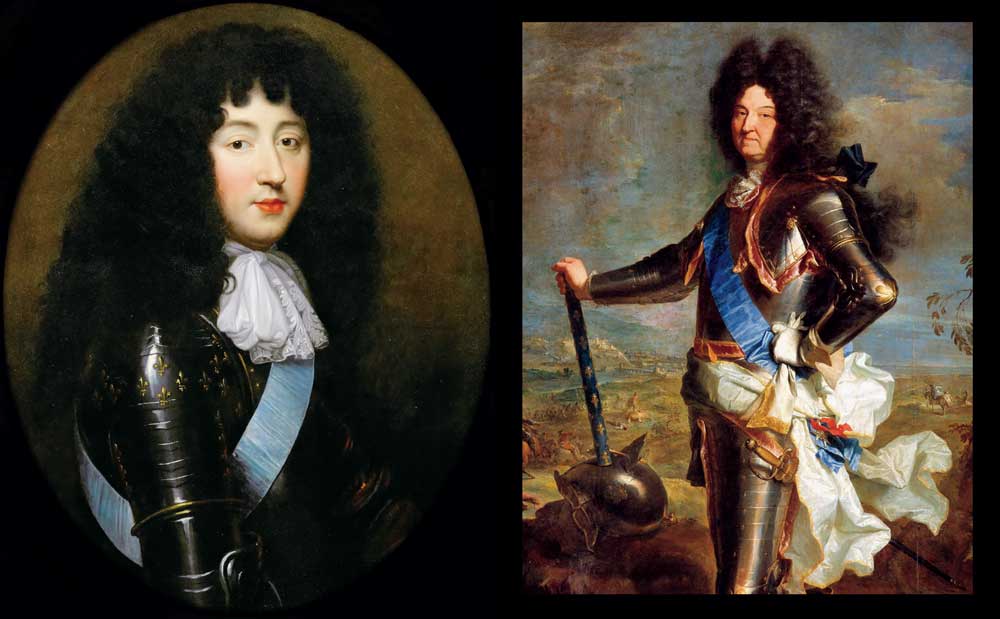
In these later decades of the reign, fraternal conflicts continued. These derived chiefly from Louis XIV’s jealousy for his own glory. In contrast to his usual image as a frivolous fop, Philippe had turned out to be a decent military commander, winning a significant battle against William of Orange in Flanders in 1677. But he received no great honours for it and was never again appointed to high command. This petty jealousy spilled over into the next generation as Monsieur’s son, the duke of Chartres (1674-1723), threatened to outshine the king’s son, the dauphin. And indeed, adding salt to the wound, the king’s most beloved illegitimate son, the duke of Maine, aged only 12, was named in 1682 provincial governor of Languedoc – the same post denied to Monsieur. The king soothed his brother’s anger as usual with a gift of sizeable funds to embellish Saint-Cloud and more large gifts for the Chevalier de Lorraine. Their last argument, in June 1701, is said to have been sparked by the king’s refusal yet again to give Chartres a field command. Monsieur became so enraged he had a heart attack and died within hours.
There was no Monsieur again until the reign of Louis XVI (r.1774-92), when his brother Louis-Stanislas, count of Provence (1755-1824), clearly took on board the lessons learned first by Gaston d’Orléans then by Philippe d’Orléans: that true princely power did not need to be expressed through political authority or military might and that patronage of the arts, architecture and learning could be equally powerful. He made himself popular in Paris in a way his brother never did through his engagement with the Enlightenment salons. This Monsieur disagreed with the king on many points about how best to reform France as it moved towards political and fiscal crisis, yet he was never openly disloyal. He knew that, in an era when the power of the media and public opinion had risen dramatically, the performance (at least) of unity in royal families was critical. Two centuries later, in a period of even more heightened public scrutiny, second sons in modern royal families might take note. There are perhaps lessons to be drawn from the fates of royal spares with personalities that were more vivacious yet more unpredictable than their older brothers, and in the dangers posed by younger sons retreating from court to set up rival centres of patronage.
Jonathan Spangler is Senior Lecturer in Early Modern European History at Manchester Metropolitan University and the author of Monsieur: Second Sons in the Monarchy of France, 1550-1800 (Routledge, 2021).
Source: History Today Feed